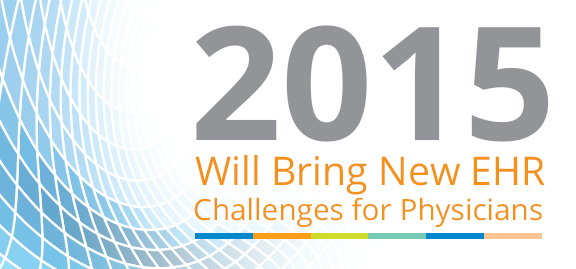The healthcare industry is in the midst of major transformation. There have been numerous technology updates and improvements in the methods of delivery. There have also been, changes in codes and regulations. All of this is being done to improve the care and safety of patients, and to enhance the security of critical data.
In this age of continuous evolution, physicians, especially those in small- and medium-sized practices, face many challenges as they strive to fully adopt Electronic Health Records (EHR), while contending with stricter federal mandates. With 2015 quickly approaching, private practices can expect new EHR challenges, as they try to keep up with the accelerated pace of the industry’s evolution.
The ICD-10 has a code for just about everything
The deadline for ICD-10 conversion is October 1, 2015. Overworked providers are facing a potential negative impact on productivity, along with numerous other challenges presented by these clinical documentation improvements.
For starters, it will take physicians and staff a lot of time to learn 68,000 diagnosis and 87,000 procedure codes in ICD-10 (compare that to 14,000 diagnosis and 4,000 procedure codes in the ICD-9 system). Failure to get everyone up to speed on the new codes, could result in a devastating loss of productivity and revenue, that could put the stability of the entire practice at risk. Secondly, once everyone is “up to speed”, there is still the concern that physicians will be forced to spend more time searching for codes, rather than dealing directly with patients.
Although, the initial 2014 deadline was pushed back, thanks to outspoken physicians’ groups like the American Medical Association (AMA) and the Medical Group Management Association (MGMA), there is still a lingering concern among many providers, that this new deadline still does not allow enough time to update systems and infrastructure, train staff, and generate enough claims, to test the system against health plans and clearinghouses. “The AMA has long considered ICD-10 to be an unfunded mandate that comes at a time when physicians are being asked to make a number of other significant changes to their practices,” said AMA President Dr. Ardis Dee Hoven.
365 days of EHR reporting
Come 2015, providers will be required to report a full year of Meaningful Use instead of the previous 90-day period. Many healthcare leaders in the industry have called for Centers for Medicare and Medicaid Services (CMS) to shorten the reporting period, and offer more program flexibility.
The push for flexible requirements is based on the release of disappointing Meaningful Use data by CMS, which shows that the industry is struggling to demonstrate capabilities. According to the CMS documentation, “less than 17 percent of the nation’s hospitals have demonstrated Stage 2 capabilities. Furthermore, less than 38 percent of eligible hospitals (EHs) and critical access hospitals (CAHs) have met either Stage of Meaningful Use in 2014, highlighting the difficulty of program requirements and foretelling continued struggles in 2015. And while eligible professionals (EPs) have until the end of February to report their progress, only 2 percent have demonstrated Stage 2 capabilities thus far.”
Industry experts continue to make the case that physicians are facing significant challenges in keeping up with stricter Meaningful Use requirements, and unless the reporting period is shortened, there may very well be continued dissatisfaction with EHRs, and disenchantment with Meaningful Use.
Those providers who are unable to participate in the Meaningful Use program will face a 1% penalty on their Medicare reimbursements in 2015. The penalties are expected to increase 1% every year until 2019. The transition from incentives to penalties, illustrates CMS’ objective, of motivating physicians to make greater use of IT in an effort to focus on quality and outcomes.
More EHR audits on the way
According to the 2015 work plan recently released by the Office of the Inspector General (OIG), healthcare providers can expect even more audits in the coming year. And to illustrate they mean business, OIG requested an increase of $105 million in next year’s budget as well as 284 additional full-time employees. Besides examining IT security and compliance, OIG will investigate EHR and healthcare fraud.
Specifically, OIG will perform audits of various covered entities and their business associates, who receive EHR incentive payments from CMS. OIG will also identify EHR system and reporting fraud as well as bogus Medicaid and Medicare EHR incentive payment claims, analyze IT security, and review the CMS IT systems, to verify necessary security measures have been adopted.
Meeting the challenges
The benefits of EHR are clear, as are the numerous challenges facing healthcare providers in the coming years. For the continued evolution of healthcare to be successful, two things will need to happen: providers must move past barriers and fully commit to adopting EHR, and government agencies must loosen regulations, or at the very least, slow the pace of regulation modifications so that providers can keep pace without jeopardizing their practices.

Join the Discussion!